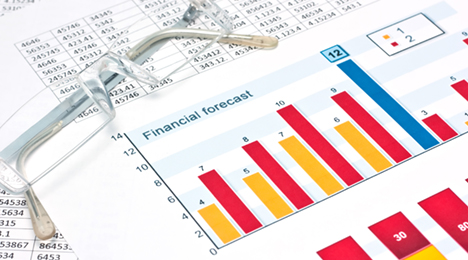Consumer Portfolio Services closed its fourth term securitization of the year this week. The transaction is CPS’ 15th senior subordinate securitization since the beginning of 2011 and the third consecutive securitization to receive a triple A rating on the senior class of notes.
In the transaction, qualified institutional buyers purchased $267.5 million of asset-backed notes secured by automobile receivables purchased by CPS.
The sold notes, issued by CPS Auto Receivables Trust 2014-D, consisted of five classes. Ratings of the notes were provided by Moody's and DBRS and were based on the structure of the transaction, the historical performance of similar receivables and CPS’ experience as a servicer.
| Note Class |
Amount |
Interest Rate |
Average Life |
Price |
Moody's Rating |
DBRS Rating |
| A |
$178.6 million |
1.49% |
1.21 years |
99.99719% |
Aa2 |
AAA |
| B |
$40.1 million |
2.95% |
2.97 years |
99.98374% |
Aa3 |
A |
| C |
$28.1 million |
4.35% |
3.70 years |
99.98868% |
Baa2 |
BBB |
| D |
$12.0 million |
5.33% |
4.08 years |
99.96979% |
Ba3 |
BB |
| E |
$8.7 million |
6.21% |
4.08 years |
99.97521% |
B2 |
B |
The weighted average effective coupon on the notes is approximately 3.07 percent.
CPS noted the 2014-D transaction has initial credit enhancement consisting of a cash deposit equal to 1.00 percent of the original receivable pool balance. The company added the final enhancement level requires accelerated payment of principal on the notes to reach overcollateralization of 4.00 percent of the then-outstanding receivable pool balance.
The transaction utilizes a pre-funding structure, in which CPS sold approximately $182.2 million of receivables this week and plans to sell approximately $85.3 million of additional receivables in January.
“This further sale is intended to provide CPS with long-term financing for receivables purchased primarily in the month of December,” officials said.
“The transaction was a private offering of securities, not registered under the Securities Act of 1933, or any state securities law,” the company continued. “All of such securities having been sold, this announcement of their sale appears as a matter of record only.”
NextGear Capital recently announced that NextGear Floorplan Master Owner Trust successfully completed the sale of $433.333 million of privately placed 144A Asset-Backed Notes, Series 2014-1.
Rated by Moody's and DBRS, the securitization transaction included the issuance of $400 million of Aaa/AAA rated Class A Notes as well as $33.333 million of subordinated A2/A rated Class B Notes.
"NextGear Capital is extremely pleased at the bond market's receptivity to our inaugural bond issue,” NextGear Capital chief financial officer David Horan said. “We are delighted with the level of investor interest as well as the pricing and the execution of the transaction.”
This news comes just months after the Cox Automotive company announced the completion of a $1.75 billion securitization facility to support the rapid growth of its dealer finance services.
Leaves are falling and so is the performance of the auto ABS market, but it’s not a “cause for alarm.” Fitch Ratings indicated that the typically slower fall season is leading to higher losses for both prime and subprime U.S. auto ABS as delinquencies return to levels not seen since the Great Recession.
Analysts determined prime auto loan ABS losses jumped 23 percent on a monthly basis in September while subprime losses moved 20 percent higher. They noted delinquency rates also rose last month versus August levels.
Fitch attributed the weaker performance to typical asset trends recorded during early fall.
“Used-vehicle values recorded their fifth consecutive monthly decline through September, which contributed to the slower asset performance in recent months,” Fitch analysts said.
“New 2015 vehicle model introductions started to hit showrooms last month, and dealers discount existing models in order to clear them out, which impacts used vehicle values negatively,” they added.
“Used vehicle values will likely soften in the remaining months of the year given rising used supply from off-lease returns and trade-ins. This will drive loss severities higher and ultimately push loss rates higher for auto ABS in October,” Fitch went on to say.
The firm reported that prime 60-day delinquencies climbed 14 percent higher on a monthly basis to 0.40 percent in September and were 11 percent higher year-over-year. Fitch mentioned September's rate was the highest level recorded since June 2012.
Analysts mentioned prime annualized net losses hit 0.46 percent in September, rising 15 percent month-over-month and 44 percent higher than a year earlier.
“Despite the notable year-over-year increase, losses are still low historically and below the solid 2005-2006 period,” Fitch said.
The firm reported both subprime delinquency and loss rates hit their highest levels in over four years in September.
Fitch acknowledged subprime 60-day delinquencies jumped to 4.34 percent in September climbing 23 percent month-over-month and 26 percent year-over-year. The development left the reading at the highest level since February 2011 (4.81 percent).
Subprime annualized net losses moved 20 percent higher month-over-month to 7.08 percent in September, and the rate was 46 percent weaker than a year earlier. September's rate was the highest since November 2005 (7.05 percent), and is expected to follow early winter patterns and weaken further in the next couple of months.
“The fall and early winter months are typically the weakest months of the year for both prime and subprime asset performance so Fitch does not see cause for alarm,” analysts said.
“Current performance for 2012-2013 vintages is still tracking well below the weak 2006-2008 recessionary vintages,” they continued. “What's more, 2012-2013 auto ABS performance has improved slightly versus the solid 2005-2006 vintages.”
Fitch insisted that ratings performance remains on track to record one of the best years ever with 55 upgrades this year (through September), up 100 percent over 2013.
Fitch’s indices track the performance of $69 billion of prime and subprime auto loan ABS. Prime auto loan ABS comprises 67 percent of the indices and subprime the remaining 33 percent.
Exeter Finance Corp. announced this week the pricing of a $500 million securitization backed by auto loan receivables.
The company indicated the private offering consisted of four classes of fixed rate notes issued by Exeter Auto Receivables Trust 2014-3 and priced on Oct. 9.
Exeter highlighted the Class A notes were rated AAA/AA by DBRS and Standard & Poor’s, respectively, while the remaining three tranches were rated A, BBB and BB by both agencies.
Officials noted the classes have weighted average lives of 1.02, 2.76, 3.62 and 4.08 years, respectively. On a blended basis, the weighted average coupon of the notes is approximately 3.13 percent.
Upon the closing of the transaction, Exeter said the net proceeds from the sale of the notes will be applied to reduce borrowings outstanding under the company’s existing warehouse financing facility.
The offering is expected to close on Wednesday.
Citigroup and Goldman, Sachs & Co. acted as joint book-runners on the transaction, with Barclays, Deutsche Bank Securities and Wells Fargo Securities participating as co-managers.
Both Credit Acceptance Corp. and Consumer Portfolio Services made financial announcements this week; one a tender offer to purchase its own shares of common stock and the other the closing of its third term securitization of the year.
Starting with Credit Acceptance, the company commenced a tender offer to purchase up to 995,698 shares of its outstanding common stock at a price of $125.54 per share.
“We anticipate that we will obtain all of the funds necessary to purchase shares tendered in the tender offer, and to pay related fees and expenses, by borrowing under our revolving secured line of credit facility and/or one or more of our revolving secured warehouse facilities,” Credit Acceptance officials said. “The tender offer is not conditioned upon the receipt of financing.”
The company indicated it evaluated operations, strategy and expectations for the future.
“We believed that the tender offer is a prudent use of our financial resources given our business profile, assets and the current market price for our shares,” Credit Acceptance said.
As of Monday, the company determined that it had $429.5 million in unused and available capacity on its revolving secured line of credit facility and revolving secured warehouse facilities.
“We believe that the tender offer represents a mechanism to provide all shareholders with the opportunity to tender all or a portion of their shares and, thereby, receive a return of the company's capital if they so elect,” officials said. “This format of repurchase also provides a method for shareholders not participating to increase their relative percentage interest in Credit Acceptance and our future operations at no additional cost.
“As a result, we believe that investing in our own shares in this manner is an attractive use of capital and an efficient means to provide value to shareholders,” they continued. “The tender offer also provides liquidity to shareholders (particularly those with large shareholdings) by providing them the opportunity to sell all or a portion of their shares at a price of $125.54 per share without potential disruption to the share price and the usual transaction costs associated with market sales.”
Credit Acceptance pointed out the tender offer will expire at 5 p.m. ET on Oct. 20, unless extended by the company.
The company pointed out tenders of shares must be made on or prior to the expiration of the tender offer and shares may be withdrawn at any time on or prior to the expiration of the tender offer.
“Our obligation to purchase shares in the tender offer is not conditioned upon any minimum number of shares being tendered,” officials said. “The tender offer is, however, subject to the conditions set forth in the Offer to Purchase and related Letter of Transmittal documents being sent to shareholders.
Under the tender offer, shareholders of Credit Acceptance common stock are invited to choose how many shares they are willing to sell to the company at $125.54 per share.
If more than the maximum number of shares sought is tendered, Credit Acceptance explained that tendering shareholders owning fewer than 100 shares, or “odd lot” holders, will have their shares purchased without proration and all other tendered shares will be purchased on a pro rata basis, subject to the conditional tender provisions described in the Offer to Purchase.
The company added that shareholders whose shares are purchased in the tender offer will be paid the purchase price net in cash, without interest, promptly after the expiration of the tender offer. Shareholders whose shares are not purchased in the tender offer will have their shares returned, free of charge, promptly after the expiration of the tender offer, according to the company.
Credit Acceptance chairman Donald Foss has indicated his nonbinding intention to tender 4.0 million shares in the tender offer. Glenda Flanagan, one of the companay’s directors, has revealed that she may tender up to 25,000 shares in the tender offer.
The company said none of its other directors or officers have indicated their intention to tender shares in the tender offer.
As of Sept. 1, Credit Acceptance had 21,593,588 shares outstanding. The last reported sale price of Credit Acceptance's common stock on the NASDAQ Global Select Market on Thursday, which was the last trading day prior to the announcing of the offer, was $125.54 per share.
CPS Makes $273 Million Senior Subordinate Asset-Backed Securitization
In other industry news, Consumer Portfolio Services announced the closing of its third term securitization of the year. The transaction is CPS’ 14th senior subordinate securitization since the beginning of 2011 and the second consecutive securitization to receive a triple A rating on the senior class of notes.
In the transaction, CPS highlighted, qualified institutional buyers purchased $273 million of asset-backed notes secured by automobile receivables purchased by the company.
The sold notes, issued by CPS Auto Receivables Trust 2014-C, consist of five classes. Ratings of the notes were provided by Standard & Poor's and DBRS and were based on the structure of the transaction, the historical performance of similar receivables and CPS's experience as a servicer.
| Note Class |
Amount |
Interest
Rate |
Average
Life |
Price |
S&P
Rating |
DBRS
Rating |
| A |
$187.0 million |
1.31% |
1.25 years |
99.99826% |
AA- |
AAA |
| B |
$36.2 million |
2.67% |
3.01 years |
99.98544% |
A |
A |
| C |
$28.7 million |
3.77% |
3.70 years |
99.98894% |
BBB |
BBB |
| D |
$13.7 million |
4.83% |
4.08 years |
99.96335% |
BB |
BB |
| E |
$7.5 million |
5.91% |
4.08 years |
99.97978% |
B+ |
B |
Officials indicated the weighted average effective coupon on the notes is approximately 2.71 percent.
CPS noted the 2014-C transaction has initial credit enhancement consisting of a cash deposit equal to 1.00 percent of the original receivable pool balance. The company pointed out the final enhancement level requires accelerated payment of principal on the notes to reach overcollateralization of 4.00% of the then-outstanding receivable pool balance.
Furthermore, officials highlighted the transaction utilizes a pre-funding structure, in which CPS sold approximately $185.2 million of receivables this week and plans to sell approximately $87.8 million of additional receivables during October. This further sale is intended to provide CPS with long-term financing for receivables purchased primarily in the month of September.
“The transaction was a private offering of securities, not registered under the Securities Act of 1933, or any state securities law,” CPS said. “All of such securities having been sold, this announcement of their sale appears as a matter of record only.”
Fitch Ratings asserted that U.S. auto lease ABS will continue to perform within expectations, and ratings will be stable even though analysts understand that used-vehicle values will continue to decline moderately from their recent “untenable” highs.
Fitch also projected that the robust loss protection in auto lease ABS (including continued realization of residual gains) will continue to support stable ratings, despite expected market pressure. Analysts noted securitized residual maturities have been higher in 2014 than any year since the last recession.
Furthermore, they mentioned March marked the highest level of securitized residual maturities ever recorded by the Fitch Index at over $525 million.
“We expect used-car values to further weaken as off-lease and fleet volumes rise and sales of new vehicles continue to be strong,” Fitch analysts said. “Today automakers reported that light vehicles sales rose by 6 percent in the past 12 months and that the seasonally adjusted annualized selling rate reached its highest level since January 2006.”
As the new-vehicle SAAR hit its highest level since 2006 this July, Fitch acknowledged vehicle trade-ins entering the secondary market increased.
“Additionally, incentive spending remains high. Cash, interest rate subvention and longer loan terms providing for lowered payments have fueled sales, making new-vehicle purchases more attractive,” analysts said.
Despite these trends, Fitch emphasized auto lease ABS is still generally producing residual value gains. Fitch's Auto Lease residual index gained 5.76 percent through July, down from gains of 8.38 percent in June and 12.02 percent a year ago.
Analysts noted July marked the fourth consecutive month of declining gains for the index, reflecting the recent softening in used-vehicle values.
Fitch also mentioned residual retention has been mixed among vehicle segments.
Luxury gains in the Fitch RV index declined dramatically in July to 2.77 percent, down from 17.08 percent a year ago.
“Notably, the car segment is experiencing pronounced price pressure, particularly within the luxury space,” analysts said. “Wholesale performance of larger vehicles has been much better, particularly for the pickup segment.”
Fitch cited Black Book analysis that indicated these trends are expected to continue for the remainder of the year.
“Fitch remains cautious and we expect residual values to decline further in the near term as dealers receive new models and discount older ones in the fall. Fitch expects that pressure to be evident in the coming months and securitized residual maturities coming off lease to remain high through 2015,” analysts said.
Despite some negative trends discussed, Fitch said its ratings performance is not expected to be impacted in 2014. Fitch has upgraded or affirmed all outstanding rated bonds since 2008, when a single class of notes was downgraded.
“Fitch's ratings assume volatile wholesale market disruptions when transaction credit enhancement grows rapidly and is capable of sustaining stresses well outside of anything historically seen — including well beyond the extraordinary value declines of 2008-2009,” analysts said.
Fitch Ratings reported U.S. auto loan ABS delinquencies and losses climbed in July on a monthly basis. However, Fitch expected such a movement, so the firm contends that asset performance in the sector should moderate further in the remainder of the year, but remain on track within initial loss expectations.
Analysts also said that prime and subprime annualized losses posted double-digit increases, while subprime delinquencies rose 5 percent year-over-year in July.
“This partly reflects typical seasonal patterns entering the weaker summer months, and the third consecutive month of softer used vehicle values,” analysts said.
Fitch indicated that prime 60-day delinquencies climbed 14 percent month-over-month in July to 0.33 percent, but the reading was unchanged from July of last year.
The firm noted prime annualized net losses jumped 21 percent in July to 0.29 percent, marking a 6.5 percent improvement versus a year earlier.
“Current loss rates are low on a historic basis, with this year’s peak annualized net losses rate at 0.49 percent in February and 0.44 percent in 2013,” analysts said.
In the subprime sector, Fitch determined 60-day delinquencies rose to 3.28 percent in July, up 13.5 percent month-over-month.
Fitch also mentioned annualized net losses in the subprime space spiked 34 percent to 4.96 percent in July to the same level recorded in March this year.
Analysts pointed out that July’s loss rate was 11.5 percent higher than what they saw in July of last year but below the peak of 5.50 percent level for the month of July recorded back in 2005, which they said was a strong period historically.
“Despite recent headlines about looser underwriting standards and aggressive expansion by auto lenders in 2014, particularly in the subprime sector, asset performance remains on track and within Fitch's initial loss expectations,” analysts said.
“Fitch expects loss rates to climb through the end of 2014 driven by weakening used-vehicle values and higher loss severity,” they continued. “However, Fitch believes asset performance will be in line with or will improve on the strong 2005-2006 period.”
As Fitch also expected, the firm noted used-vehicle values declined for the third consecutive month in July, as used-vehicle supply continues to rise on an annual basis driven by higher off-lease and trade-in volumes relative to the last four years.
The Manheim Used Vehicle Value Index was at 122.7, which was 1.5 percent higher than July of last year and only slightly down from the peak 2014 level (124.9).
Fitch cited Manheim’s analysis that explained used-vehicle pricing is still strong on a historical basis so far this year, and the recent modest declines can be attributed to adjustments that were expected to occur earlier this year.
“Despite this, Fitch is focused on the wholesale vehicle market in 2014 going into 2015, given the higher used-vehicle volumes entering the market, and its potential impact on wholesale prices and loss levels,” analysts said.
Fitch added that ratings performance is on track to post the highest number of upgrades going back to 2007 (95 upgrades), with 44 upgrades issued through July this year.
“Fitch expects this trend to continue in the remaining four months of the year as transactions amortize down and credit enhancement builds rapidly,” analysts said.
Fitch's indices track the performance of $76.5 billion of outstanding prime and subprime auto ABS as 64 percent of the index is comprised of prime auto ABS, and the remaining 26 percent subprime auto ABS.
Along with approving new requirements for credit rating agencies such as Moody’s and Standard & Poor’s, the Securities and Exchange Commission this week also adopted revisions to rules governing the disclosure, reporting, and offering process for asset-backed securities (ABS), which often batches together auto loans from a wide array of finance companies.
SEC officials explained that they made the move to enhance transparency, better protect investors, and facilitate capital formation in the securitization market.
The agency highlighted the new rules, among other things, require loan-level disclosure for certain assets, such as residential and commercial mortgages and auto loans. The SEC indicated the rules also provide more time for investors to review and consider a securitization offering, revise the eligibility criteria for using an expedited offering process known as “shelf offerings,” and make important revisions to reporting requirements.
“These are strong reforms to protect America’s investors by enhancing the disclosure requirements for asset-backed securities and by making it easier for investors to review and access the information they need to make informed investment decisions,” SEC chair Mary Jo White said.
“Unlike during the financial crisis, investors will now be able to independently conduct due diligence to better assess the credit risk of asset-backed securities,” White continued.
The SEC recapped that ABS are created by buying and bundling loans, such as residential and commercial mortgage loans, and auto loans and leases, and creating securities backed by those assets for sale to investors. A bundle of loans is often divided into separate securities with varying levels of risk and returns. Payments made by the borrowers on the underlying loans are passed on to investors in the ABS.
Officials reiterated ABS holders suffered significant losses during the 2008 financial crisis.
“The crisis revealed that many investors in the securitization market were not fully aware of the risks underlying the securitized assets and over-relied on ratings assigned by credit rating agencies, which in many cases did not appropriately evaluate the credit risk of the securities,” the SEC said.
“The crisis also exposed a lack of transparency and oversight by the principal officers in the securitization transactions,” the agency continued. “The revised rules are designed to address these problems and to enhance investor protection.”
SEC officials noted the revised rules become effective 60 days after publication in the Federal Register. They emphasized issuers must comply with new rules, forms, and disclosures other than the asset-level disclosure requirements no later than one year after the rules are published in the Federal Register.
The agency went on to mention offerings of ABS backed by residential and commercial mortgages, auto loans, auto leases and debt securities (including resecuritizations) must comply with the asset-level disclosure requirements no later than two years after the rules are published in the Federal Register.
SEC Adopts Credit Rating Agency Reform Rules
In other news from the SEC, the agency approved new requirements for credit rating agencies to enhance governance, protect against conflicts of interest, and increase transparency to improve the quality of credit ratings and increase credit rating agency accountability.
Officials explained the new rules and amendments — which implement 14 rulemaking requirements under the Dodd-Frank Wall Street Reform and Consumer Protection Act — apply to credit rating agencies registered with the Commission as nationally recognized statistical rating organizations (NRSROs).
“This expansive package of reforms will strengthen the overall quality of credit ratings, enhance the transparency of credit rating agencies and increase their accountability,” White said.
“These reforms will help protect investors and markets against a repeat of the conduct and practices that were central to the financial crisis,” she added.
The SEC indicated the new requirements for NRSROs address internal controls, conflicts of interest, disclosure of credit rating performance statistics, procedures to protect the integrity and transparency of rating methodologies, disclosures to promote the transparency of credit ratings, and standards for training, experience and competence of credit analysts.
“The requirements provide for an annual certification by the CEO as to the effectiveness of internal controls and additional certifications to accompany credit ratings attesting that the rating was not influenced by other business activities,” officials said.
The commission also adopted requirements for issuers, underwriters, and third-party due diligence services to promote the transparency of the findings and conclusions of third-party due diligence regarding asset-backed securities.
Officials noted that certain amendments will become effective 60 days after publication in the Federal Register.
The SEC added the amendments with respect to the annual report on internal controls and the production and disclosure of performance statistics will be effective on Jan. 1, 2015, which means that the first internal controls report to be submitted by an NRSRO would cover the fiscal year that ends on or after Jan. 1, 2015, and the first annual certification on Form NRSRO relating to performance statistics is required for the annual certifications filed after the end of the 2015 calendar year.
Near-term predictions made this week by Moody's Investors Service fall in line with ongoing lending cycle points noticed by veteran finance company executives such as Credit Acceptance’s Brett Roberts and Brad Bradley of Consumer Portfolio Services.
Moody’s analysts indicated in a new report that they do not expect losses of U.S. subprime auto loans to reach crisis levels. The firm acknowledged delinquencies have risen over the last few years, but they remain below the levels at the height of the financial crisis and have started to moderate.
Moody's senior vice president Mack Caldwell elaborated about that stance in the report, titled, “U.S. Subprime Auto Loan Delinquencies, Still Below Post-Crisis Highs, Reflect Typical Credit Expansion.”
Caldwell said, “Subprime auto lenders have already started to rein in lending to weaker credit-quality borrowers. Barring an imprudent expansion in lending to subprime borrowers, delinquencies will not increase to crisis levels.”
During their most recent quarterly conference calls, both Roberts and Bradley talked about the industry cycles both have seen in the subprime financing space. The finance company leaders each told Wall Street observers that their underwriting practices haven’t loosened in an attempt to chase volume — practices sometimes leveraged by other well-established institutions as well as start-up operations.
Bradley explained this is the third cycle of ups and downs in the subprime space since he’s been associated with CPS. Bradley also referenced what he called the second cycle — the span going into the last recession that he believes was “dominated by large banks.”
The CPS chairman, president and chief executive officer said, “Those large banks were able to compete very aggressively on price, caused a lot of independent players to really work hard and cut price and maybe buy more aggressively. All of those companies did just fine. We all went through it. I don't think anyone really particularly went out of business for credit reasons. A couple of people went out of business because they ran out of funding. That's a very distinct difference.”
Bradley went on to mention how much better finance company leadership is now as compared to lending cycles past.
“Almost all of the companies today are being run by people who have been in the industry for 25 years, as opposed to the first cycle where a bunch of the companies were run by people who had been in the industry for 5 minutes,” Bradley said.
“And so as much as you will have a few companies that don't do it particularly right, and a few of them fall on their face for a variety of different reasons, by and large the industry as a whole should do just fine,” he continued. “It’s run by better people. You’re going to have a few fall out, much like in the first cycle. But in terms of seeing this industry fall apart in any grand scale, it’s sort of hard to figure out why people would think that. It's run by more seasoned executives. There is no pricing pressure from banks.
“And in fact, we are sitting in one of the most favorable environments we possibly could be in,” Bradley went on to say.
In this week’s report, Moody’s emphasized the increase in financing to subprime customers marks the return to a typical consumer lending cycle. In recent months, Moody's contends that banks and other non-traditional finance companies have started to pull back from lending to subprime borrowers, which has eased pressure on the smaller finance companies that traditionally finance subprime auto loans.
With less competitive pressure, Caldwell insisted finance companies can target higher-credit-quality borrowers.
“Lenders have become more cautious, as evidenced by the rising credit scores of borrowers buying used vehicles," Caldwell said. “Subprime interest rates are also rising, a sign that lenders have a lower risk appetite.”
That slackening appetite is part of the typical cycle Roberts stressed to the investment community that he’s seen, as well. The Credit Acceptance CEO was asked to elaborate how contracts the competition might be adding to its portfolio might be influencing his company’s bottom line.
“The returns that we try to make, our target returns are quite a bit higher than the target returns of a lot of the companies we compete with,” Roberts said. “If everything goes according to plan, the profit per deal that we shoot to achieve is typically quite a bit higher in terms of returns. You can look at the other public companies that are out there that are auto finance companies, and compute their returns, and you can corroborate what I'm saying.
“But then usually there's a part of the cycle where things don't go according to plan,” he continued. “And because we have a nice margin of safety built into our business model, we typically do OK during those periods. There are other companies that operate with razor thin margins that don't do as well. We would expect it to play out the same way this time.”
Moody’s pointed out that delinquencies have risen with each full origination year since 2010. Analysts insisted the economic recovery and pent-up demand for vehicles spurred lenders to increase their loan volumes by extending credit to weaker borrowers.
Moody's vice president and senior analyst Peter McNally, a co-author of the report, also mentioned competition among finance companies increased to accommodate the pent-up demand, causing institutions to loosen underwriting standards.
“The potential for profits from subprime lending attracted banks, credit unions and captive finance companies, which typically do not focus heavily on subprime borrowers,” McNally said. “The average credit score on both used- and new-vehicle loans had declined and loan terms had lengthened, increasing the period in which a borrower could default.”
Moody's closed its report by noting analysts continue to be concerned over the long term about the operational risk in asset-backed securitizations backed by subprime auto loans from smaller lenders, which the firm’s ratings reflect.
“Increasing origination levels for small, niche players strain their ability to manage loan and transaction cash flows if they do not also increase servicing capacity, which can ultimately lead to higher losses,” McNally said.
“Higher loan losses can cause a financially strapped lender to lose investor confidence and funding, increasing the securitization’s losses if the servicer fails and a servicing transfer disrupts collections and loss remediation efforts,” he added.
Westlake Financial Services announced this week that it closed its fifth term asset backed securitization (ABS) on May 28 in a bond offering increased from $275 million to $321 million due to significant investor demand.
The company highlighted five classes of bonds were offered, ranging from A1+ to BBB. Westlake also noted all were at least three times oversubscribed by investors.
J.P. Morgan served as structuring lead manager and joint book-runner with Credit Suisse as the co-lead and joint book-runner. Wells Fargo and RBS were co-managers on the deal.
“Westlake’s credit performance has been stable and our business remains strong despite competitive pressures,” Westlake chief financial officer Paul Kerwin said. “We are pleased to see additional names added to our investor base and applaud the efforts of our underwriters in helping make these connections.
“Our ABS investors can expect us to ramp up our issuances as we continue to make inroads in the franchise dealer market,” Kerwin added.
Kerwin also noted Westlake issued BBB bonds for the first time and achieved a 93-percent advance rate on the total bond issuance.
“Westlake Financial has been consistent for a long time. They have a strong platform, strong credit profile, and a strong company name,” J.P. Morgan managing director John Cho said.
“The bond offering has 15 new investors on the books, which is a large percentage considering there are 31 investors all together,” Cho continued. “Westlake credit spreads will continue to tighten as investors differentiate that this is a strong platform and liquidity continues to build their name.”
Westlake Financial Services boasts a rapidly growing portfolio, which includes a current portfolio of $1.905 billion as of May, up from $210 million at the same month last year.
The company’s dealer base consists of approximately 21,000 independent and franchised stores throughout all 50 states.
Now with ABS offer finalized, Westlake Financial Services assistant vice president of finance Jonathan Zhan said, “This is a reflection of strong investor demand. This shows the strength of Westlake performance and execution and investors’ belief in our business.”











